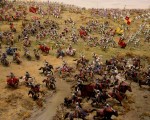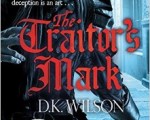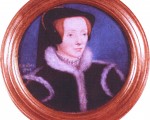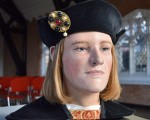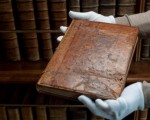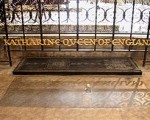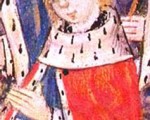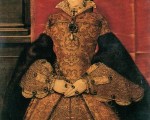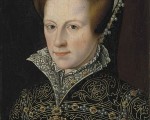
YOUR SEARCH UNCOVERED 846 RESULTS
-
This week in history 28 September – 4 October

-
The Princes in the Tower – Philippa Langley aims to crack the case
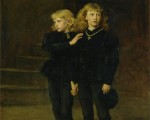
Philippa Langley, who, of course, spear-headed the Looking for Richard project, has announced that she is going to investigate the disappearance of the Princes in the Tower by teaming up with cold case experts.
[Read More...] -
Battle of Bosworth Quiz
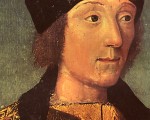
As yesterday was the anniversary of the Battle of Bosworth, why not test your knowledge of this historic battle.
[Read More...] -
This week in history 17 – 23 August
-
Congratulations to John Ashdown-Hill on his MBE

On behalf of all the members of the Tudor Society, I would just like to offer our sincere and warm congratulations to historian John Ashdown-Hill who has been awarded an MBE for services to Historical Research and the Exhumation and Identification of Richard III.
[Read More...] -
Lady Margaret Beaufort
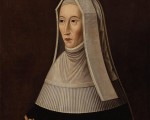
Margaret Beaufort, Countess of Richmond and Derby, and matriarch of the Tudor dynasty, was born at Bletsoe Castle in Bedfordshire on 31st May 1443. She was the daughter of Margaret Beauchamp of Bletsoe and John Beaufort, 1st Duke of Somerset, grandson of John of Gaunt, 1st Duke of Lancaster, and his mistress (and eventual wife) Katherine Swynford. Margaret was their only child. Although a 1397 act of Parliament legitimized the children of John of Gaunt and Katherine Swynford, Henry IV declared that they could never inherit the throne.
[Read More...] -
Henry VII
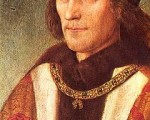
Henry VII, or Henry Tudor, was born on 28 January 1457 at Pembroke Castle and was the son of Edmund Tudor, 1st Earl of Richmond, and Margaret Beaufort. Henry’s paternal grandparents were Owen Tudor (a former page to Henry V) and Catherine of Valois, the widow of Henry V and mother of Henry VI. His maternal grandfather was John Beaufort, 1st Duke of Somerset, and his maternal great-grandfather (John Beaufort, 1st Earl of Somerset) was a son of John of Gaunt, 1st Duke of Lancaster, and his mistress (and later wife), Katherine Swynford. It was from this Beaufort side of the family that Henry VII derived his claim to the throne. Lady Margaret Beaufort was only thirteen years old when Henry was born and she was already a widow, his father having died from the plague three months earlier while imprisoned by Yorkists. Margaret had been taken in by her brother-in-law, Jasper Tudor, Earl of Pembroke, the man who helped bring Henry up, who took him into exile in Brittany and who helped him win the crown of England.
[Read More...] -
May 2015 Tudor Life Magazine
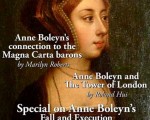
Here’s the May Tudor Life magazine with a huge 57 page special on Anne Boleyn plus all our regular items and contributors!
[Read More...] -
The Road to Bosworth by Sarah Bryson

The Battle of Bosworth has gone down in record as one of the most pivotal battles in English history. The aftermath of the battle changed the course of England and saw a new monarch and dynasty come to the throne.
The 1st of August 1485 was to be the day that Henry Tudor would finally leave France after fourteen years of exile in Brittany and France aiming to lay claim to the English throne. He set sail from Harfleur, France accompanied by approximately 400 Englishmen, 800 Scots and approximately 1500 French troops. The exact number of French troops is hard to estimate as different reports record different numbers.
[Read More...] -
Recent and forthcoming books Spring 2015
-
In the news this week 23 – 29 March 2015
-
In the news this week 16-22 March
-
This week in history 16 – 22 March
-
In the news this week 9-15 March
-
In the news this week
-
Henry VII

Henry VII was born at Pembroke Castle on the 28th January 1457. His parents were the thirteen year-old Lady Margaret Beaufort and her husband Edmund Tudor, 1st Earl of Richmond, who, unfortunately, had died of the plague three months before Henry’s birth.
[Read More...] -
This week in history 26 January – 1st February
-
Tudor Life December 2014

This is our BUMPER CHRISTMAS magazine, with an amazing 108 pages packed with facts, stories and fun related to the Tudor period, and of course to Christmas too!
[Read More...] -
This week in history 17 – 23 November
-
This Week in History 3 – 9 November
-
This Week in History 27 October – 2 November
-
This Week in History 29 September – 5 October
-
Henry VII Primary Sources
-
The Battle of Bosworth Field and the beginning of the Tudor Dynasty
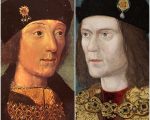
On this day in history, 22nd August 1485, the last Plantagenet king, Richard III, was killed when his Yorkist forces met those of Lancastrian Henry Tudor at the Battle of Bosworth Field.
Henry claimed the throne as Henry VII and went on to marry Richard’s niece, Elizabeth of York, daughter of King Edward IV, thus uniting the royal houses of York and Lancaster. It was the start of a new dynasty of the throne of England: the Tudors.
[Read More...] -
The princess who lived in the shadow of kings – Katherine of York
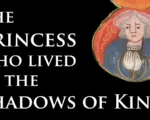
On this day in history, 14th August 1479, Katherine of York was born.
She was the daughter of King Edward IV and Queen Elizabeth Woodville, the sister of Queen Elizabeth of York and the Princes in the Tower, and the aunt of Henry VIII. She was at the very heart of Plantagenet and Tudor dynasties — living through regime change, rebellion, and royal funerals, yet she chose to live out her final days on her estates in Devon.
[Read More...] -
Sir Reginald Bray – The Man Who Helped Make Henry VII King
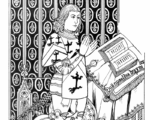
On this day in Tudor history, 5th August 1503, administrator Sir Reginald Bray died.
Now, you may not have heard of him, he’s not a household name, but this quiet powerhouse of the Tudor court knew Henry VII from boyhood, helped plan the invasion that toppled Richard III, and then served as one of the most powerful men in England.
[Read More...] -
The Tudor Lord with 9 Lives – John Scrope, 5th Baron Scrope of Bolton
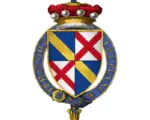
On this day in history, 22nd July 1437 (or 1438), John Scrope, 5th Baron Scrope of Bolton, was born at Bolton Castle in Yorkshire. He was a man who’d back the losing side multiple times, but with his head intact.
He fought at Towton with Edward IV, rebelled against him, supported Richard III, then Henry VII, then backed a royal pretender… yet he survived! He reall was like a cat with nine lives.
[Read More...] -
The Downfall of Germain Gardiner, John Larke & the Prebendaries’ Plot
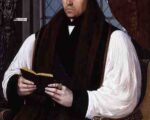
By the early 1540s, England’s religious landscape was a minefield. The dissolution of the monasteries had shaken traditional Catholic structures, and Protestant reformers like Archbishop Thomas Cranmer were pushing Henry VIII’s Church further from Rome.
Not everyone was on board.
A faction of conservative clergy and laymen began working covertly to stop these changes. This movement, known as the Prebendaries’ Plot, was centred around five prebendary canons of Canterbury Cathedral, including William Hadleigh, a former monk of Christchurch Canterbury.
[Read More...] -
Anne Line, Margaret Clitherow and Margaret Ward – Three Catholic Martyrs
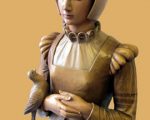
Today, on the anniversary of Anne Line’s execution, on 27th February 1601, I’m honouring her and two other remarkable women, Margaret Clitherow and Margaret Ward, who gave their lives for harbouring Catholic priests in Elizabethan England.
Their crime? Offering sanctuary to men whose very existence had been outlawed. Their fate? Torture, brutal executions, and posthumous sainthood.
But why was it so dangerous to harbour a priest in the reign of Elizabeth I?In Tudor England, religion wasn’t just a matter of personal belief—it was a matter of life and death.
Following Henry VIII’s break with Rome, England became a Protestant nation. But when his daughter Mary I took the throne, she restored Catholicism and a couple of hundred Protestants burned at the stake. Then, in 1558, Elizabeth I became queen, and England swung back to Protestantism.
[Read More...]
Catholics who had hoped for tolerance soon realised that Elizabeth’s government viewed them as a threat. When the Pope excommunicated Elizabeth in 1570, it escalated the conflict. Catholics were now seen as potential traitors—loyal to the Pope, not the queen. -
George Carey, 2nd Baron Hunsdon
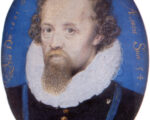
He was the grandson of Mary Boleyn, the husband of Elizabeth Spencer, and a trusted courtier of Elizabeth I. But George Carey, 2nd Baron Hunsdon, wasn’t just another nobleman, he was a key figure in the world of Elizabethan theatre, a patron of Shakespeare’s acting company, and a man who rose to one of the most powerful positions at court.
Today, let’s dive into the fascinating life of George Carey, 2nd Baron Hunsdon; his Boleyn connections, his military career, and his role in shaping the golden age of Elizabethan theatre.
[Read More...]

